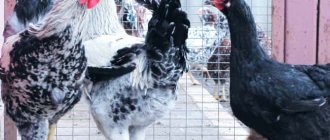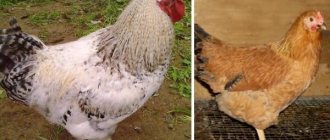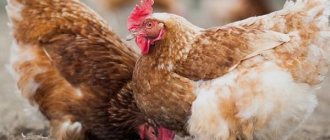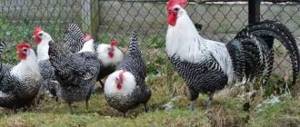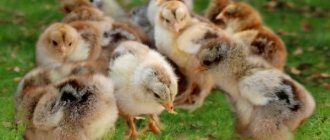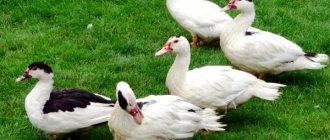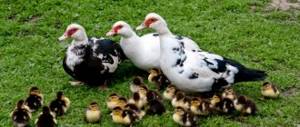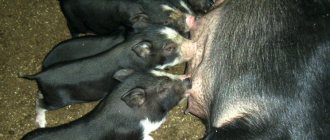Popular types of chickens in Germany
German chicken breeds are popular in our country. German breeders have given the world bird species of different types. Among them, there are those that are actively grown, and there are others that are gradually dying out. But despite this, they are all worthy of attention. We invite you to get acquainted with the most interesting species that were obtained through selection at different times in Germany.
Chicken breeds
- Loman Brown. Farmers' favorites. Crosses are obtained from four hybrids, so it is difficult to breed them in their pure form on their own. Despite their meat-egg orientation, they are excellent layers, capable of producing up to 300 eggs per year. They are large in size with a dense brown shell. The bird begins to lay eggs closer to five months. They are unpretentious by nature and easily adapt to various conditions. The feather color is white and reddish brown. The wings are developed. The body is dense with a wide chest. The bird is not prone to obesity. The behavior of individuals is not conflicting; they get along well with their neighbors.
Hamburg chicken
- Vorwerk. A bird with a massive and well-built physique. The body is large, squat, supported by not very long legs. The back is wide, smoothly turning horizontally into the tail. Low, rounded breasts. A distinctive feature of the species is that the females are much larger than the rooster. The bird's hue is old gold except for the tail and head. They are black. Poultry productivity is good. The average weight of hens is 3 kilograms, and the cockerel is 2.5 kilograms. During the year, the bird can lay up to 170 eggs.
Vorwerk
- Annaberger crested-curly. This is a rare ornamental bird, bred in 1957. It has curly plumage in silver, white and black shades. The head has a crest and a comb in the form of a horn. The bird is friendly and inquisitive. Cockerels do not weigh more than 1.5 kilograms. The egg production of chickens is about 120 eggs per year. Their shell is white and cream. The hens hatch their chicks well and take care of them.
Bielefelder
- Sundheimer. Appeared at the end of the 19th century. Currently listed in the Red Book as a rare species. It has good productivity - egg production up to 220 eggs per year weighing 60 grams. An adult chicken reaches 2.5 kilograms in weight, and a rooster weighs 3.5 kilograms.
Sundheimer.
Chicks are prone to rapid weight gain. But their plumage appears much later. The bird is too cautious and difficult to train. The character of the individuals is calm and balanced. Chickens are caring mothers.
Individuals have a medium build. The chest is convex and wide. The head is elongated and small. There is a comb with thin red lobes on it. The color of the feathers is white and black Colombian.
All proposed types of chickens are interesting. They have their pros and cons. But in any case, the choice will always be yours.
Popular German chicken breeds with a brief description
Loman Brown – laying hen from Germany
The loman brown hybrid has gained wide recognition due to its high egg production. During the year, the bird lays 320–340 eggs weighing 60–65 g. The laying hen matures early - at 4.5 months. The period of intensive oviposition lasts 80 weeks. At the end of the process, the livestock is replaced as productivity drops.
German laying hen Loman Brown
Other advantages of Loman Brown:
- low feed consumption – 115 g per day;
- viability of the young - out of 100 chicks, only 2 die;
- contact, friendliness;
- adaptability to the Russian climate;
- stress resistance.
Attention! Loman Brown is a hybrid, not a breed, so it is impossible to breed these chickens at home. This is the only drawback of the German woman.
Amroks - meat and egg German breed of chickens
Breeders from Germany bred Amrox chickens in the 19th century based on the Plymouth rock breed, which was brought to the country from the USA. Scientists worked in 2 directions - to increase productivity and improve the adaptive qualities and endurance of the bird. The new universal line immediately attracted the attention of farmers. Today, Amrox is used to create productive hybrids.
Amrox chicken breed
The German meat-and-egg chicken is very beautiful, it is a typical Ryaba chicken - a downed bird with a massive body and a convex breast and has thick cuckoo-colored plumage. The weight of a rooster reaches 4 kg, and a laying hen weighs 2.7–3 kg. Chicks grow quickly and reach maturity by 5.5–6 months. Egg production is at an average level - in the first year of laying - 200 eggs, then the indicators decrease to 170-180 units of production.
Advantages of the Amrox breed:
- survival rate of young animals – 95%, adult livestock – 92%;
- the ability to quickly adapt to new living conditions;
- undemanding to the food supply;
- high productivity;
- calm character.
Bielefelder
The creator of this line is Herbert Roth. The breeder began working on a new breed in the 70s of the 20th century. He wanted to get a large, meaty, calm chicken that can easily tolerate cold and at the same time show high egg production. To achieve his goal, Roth crossed the Amrox, New Hampshire, Rhode Island, Mechelen cuckoo and Welsumer lines.
Bielefelder chickens
The result was achieved - the German breed of Bielefelder chickens absorbed the best qualities of their ancestors - frost resistance, rapid growth, strong immunity and unpretentiousness in feeding. Moreover, its representatives are autosex, that is, the sex of the chickens can be determined at one day of age.
Productive qualities:
- egg production – 200 eggs per year;
- rooster carcass weight – 4.5 kg, laying hen – 3.8 kg.
Attention! Chickens from Germany Bielefelder are suitable for the middle zone; they easily tolerate frosty winters.
Lakenfelder
The breed was created in northern Westphalia and surrounding areas of the Netherlands at the beginning of the 19th century. Lakenfelder is a meat and egg chicken with a beautiful color. The feathers on the body are white, and on the neck, tail and partly on the wings they are black. Representatives of this line have a dark beak and metatarsus.
Rooster Lakenfelder
The bird is small, but famous for its delicious meat. The weight of a one-year-old rooster is approximately 2.2 kg, the weight of a laying hen is 1.8 kg. Hens lay about 160 eggs per year.
Vorwerk
The Germans created the Vorwerk chicken in 1900, based on the Orpington. The scientists were pleased with the result of their work - the result was a bird with a bright appearance and excellent productive performance.
The German laying hen Vorwerk will not go unnoticed in the yard. It is distinguished by its unusual color - the body is golden-red, and the neck and tail are decorated with pitch-black feathers. The feathered legs are gray-blue, and the earlobes are white.
German Vorwerk chickens
Vorwerk chickens are squat, with a massive body and a rounded belly. Carcass weight – 3 kg. Egg production is average - 170 units of production annually. Egg weight – 55 g.
Hamburg
The ancestors of Hamburg chickens were brought to Europe through the port of Hamburg, where the name of the breed comes from. German breeders decided to create poultry that lays eggs all year round, adapts well to any conditions and has a decorative appearance. To do this, they crossed Cochin, Ramelslayer, Talakshire, Pheasant Yorkshire and black chickens from Spain.
In 1740, breeders presented the result of their work. The result was a compact, elegant bird with a toned physique and beautiful posture. The plumage of the Hamburg laying hen is motley - speckled or striped.
Hamburg rooster
Hens mature by 5 months and lay 160–180 eggs in the first year of laying, then the numbers drop. The weight of the rooster carcass is 2.5 kg. The meat tastes good, soft, but a little dry in the breast area.
Sundheimer
A rare breed of chickens of German selection, bred at the end of the 19th century on the basis of French Houdans, Dorkings, Brahms and Cochins. The bird belongs to the meat and egg category, but today it is grown as an ornamental one.
Attention! Sundheimer chickens are listed in the Red Book. There are just over 1,000 representatives of the breed in the world, most of them are concentrated in Germany.
The feather color of Sundheimers is Colombian, black and white. The body is well muscled with a horizontal stance, rounded shoulders, and a full belly. Laying hens produce 180–220 brown-shelled eggs per year.
Sundheimer chickens
Annaberger crested-curly
The line appeared in 1957. This is a mini chicken weighing 1.5 kg. The curly-crested Anaberger has a compact size and a rounded body. On the short neck is a small head with a tiny horn-shaped crest and a fluffy crest. The plumage is speckled, black and white. The structure of the feather is loose. Birds look funny because their feathers curl outward a little. This feature of the breed is reflected in its name.
East Frisian gull
A rare breed line appeared about 300 years ago. According to scientists, peasants living at that time in the territory of modern Germany crossed aboriginal laying hens with Belgian ones. The result was a meat-egg type bird with a bright appearance reminiscent of seagulls. There are two types of color - silver and golden-red. The main tone is concentrated in the neck and chest, and on the stomach, back and wings there are small black specks resembling ripples.
East Frisian gull
The productivity indicators of the German female are average - the carcass weight is 3 kg. In a year, laying hens can produce 160 eggs weighing 65 g. Sexual maturity occurs at 6 months.
Rhineland
The creator of the breed is Hans Rudolf von Langen, a breeder who lived in Germany in the 19th century. In 1908, his chickens received a high award at an exhibition. The Rhine hen has a massive body with a wide back and a well-muscled chest. There is an unusually shaped crest on the head, this is only found on representatives of this breed. The earlobes are painted white.
Rhine chicken breed
Feather color options are varied:
- black;
- white;
- partridge;
- blue;
- Colombian.
Productive characteristics of the Rhine chicken: weight – 2.8 kg, egg production – 180 eggs, egg weight – 55–60 g.
Westphalian Totleger
There is no exact information about the origin of this breed. We only know that it was created with the participation of Brekel hens. The name "totleger" literally translates as "rushing to death." It accurately describes the peculiarity of chickens, whose egg production almost does not decrease with age.
Representatives of this line have a specific appearance:
- white large lobes;
- small round red earrings;
- underdeveloped neat comb;
- pear-shaped body;
- thick mane flowing down the back.
Westphalian Totleger
Totleggers have beautiful plumage. The color can be white or red. In each case, the lower part of the bird's body is dotted with black ripples. At the same time, the feathers on the neck and chest are monochromatic. Roosters have a luxurious long crescent-shaped tail.
Now only collectors are involved in breeding totleggers, so amateur breeders are faced with the problem of purchasing eggs and young stock. Egg production of chickens is at an average level - 150 units of production per year.
German hawk
The breed appeared in the German city of Duisburg in 1900. Its creator is a farmer-breeder named Trieloff. He set a goal to breed a meat-egg type chicken with a beautiful cuckoo coloration. The breed has not yet undergone the standardization procedure, but at the beginning of the 20th century, farmers from Germany founded a club for its lovers. This line is on the endangered species list. There are only 1,300 breeding individuals on German farms. Today, many enthusiasts are trying to restore the breed.
Attention! The dwarf variety of German hawk, created by Paul Adam and Heinrich Röhm in 1960, was recognized by the commissioners and standardized.
Productivity:
- carcass weight of a male – 2.5 kg, female – 2 kg;
- egg production – 180–220 eggs;
- egg weight – 60 g.
German hawk
German chickens: what are their features?
It is so important for a novice poultry farmer to know which breeds of chickens are best suited for him. This depends on several factors, including the direction of productivity and adaptation to different conditions. Next we will talk about what kind of German chickens there are.
German breeds of chickens differ from each other in terms of productivity, weight, egg production and other characteristics. There are, for example, very large Orpington chickens. In Germany, yellow Orpingtons were bred through selective breeding. The breed received a separate name “Vorwerk” in 1912, twelve years after its breeding.
Features of Forwerk chickens are lighter in weight: 2 - 2.5 kg versus 4.5 - 5.5 kg for Orpingtons. The breed is distinguished by its strong physique and good egg production - 170 eggs in the first year, then 140.
When choosing chickens for breeding, it is important to know that the average egg production is 150 eggs. If you raise chickens for the purpose of producing eggs, then you need to choose breeds of egg-laying chickens. They can produce up to 280 eggs per year. German laying hens of the Amrox breed are well suited for this purpose.
Yellow Orpingtons are excellent for eating, having white skin and legs. Forwers are distinguished by their strong build and full breasts. Their legs are of medium length, their wings are tightly pressed to the body, and their crest is small. A distinctive feature of their coloring is the black head and neck with a yellow-brown body. Roosters also have a black tail. Laying hens of the German breed are Amrox.
This breed was discovered by breeders working on the striped Plymouth Rock. Chickens of the Amrox breed differ from their predecessors in the less clear color of their plumage, which also alternates gray and white stripes. Chickens of both breeds are black with white spots. You can tell by a clear white spot on the head that a chicken has been born. A feature of Amrox chickens is their abundant egg production of 200 eggs per year.
Amrox have a wide chest and back. The live weight of chickens of this breed is small - 2.2 kg, roosters weigh 1.3 kg more. Chickens of the Amrox breed develop quickly and have high safety rates. There is also a German type of Langshan breed. These chickens are bare-footed, which is why they differ from the English type.
Compared to Amrox chickens, Langshan does not have such egg production - on average, you can get 150 eggs per year. But Langshan chickens have a large live weight - about three and a half kilograms, roosters are 1 kg more. The color of this breed can be white, black, blue - if you cross the first two.
Fighting chickens of the Azil and Indian fighting breeds were also imported to Germany. Both breeds have an aggressive nature. Azil hens weigh about 2 kg, roosters 0.5 kg more, but some types of Azil roosters can reach a live weight of 6 kg. Indian fighting breed roosters can weigh up to 4.5 kg. Chickens are good for incubating eggs.
In Germany, chickens of the meat and egg production type are common. There are also fighting chickens imported from abroad. Each breed of German chickens has its own unique characteristics, the main ones of which can be learned from this article. This is useful information for beginning poultry farmers.
Breed of chickens Zagorsk salmon
Breeding masters near Moscow have obtained a breed of laying hens that is interesting for homestead owners. These are Zagorsk salmon chickens, so named due to the light, beautiful shade of meat of good taste. The weight of a rooster of this variety reaches 3.6 kg, and chickens can weigh up to 2.7 kg.
Beginning poultry keepers may be attracted by the fact that males and females differ from each other from the age of one day. And by the time they grow up, when the coloring is completely formed, you certainly cannot confuse roosters and hens.
Quite large laying hens give the owner up to 260 eggs weighing about 60 grams per year.
Features of egg-laying chickens
Egg-laying chickens have a dense build and a slightly elongated tail. The comb is usually erect, the lobes are large. Such birds have a number of similar characteristics by which they can be distinguished.
- The bird's weight is small, about 2.5 kg.
- Development is very fast; the first clutch can be expected within 4-5 months.
- After 5 months, the chicken reaches physical maturity.
- The productivity of one individual is in the range of 250-300 eggs/year or more.
The character of such birds depends only on the breed. There are species with a good-natured disposition, not shy, inquisitive. And there are breeds, although highly productive, that are aggressive, cannot tolerate loud sounds and quickly become stressed.
White Leghorn chickens
Among the breeds of laying hens exclusively for eggs, the most famous and widespread is the White Leghorn. Active, actively feeding and early maturing chickens have been known to poultry farmers around the world for many decades as record holders for early egg production. Birds lay their first white eggs weighing up to 62 grams at 4–5 months. Moreover, the number of eggs in the best representatives of the breed reaches 250 pieces. The weight of an adult bird, when compared with meat varieties, is very small - only 1.5–2.5 kg. But with proper feeding of young animals, you can get excellent quality meat.
Dwarf Leghorns, which also have egg specialization, are ideal for small farms. The weight of these chickens does not exceed 1.7 kg, with the same egg production as large birds.
The best egg breeds of chickens for the home
Among the variety of egg-laying chicken breeds, the most famous ones stand out. Many farmers know these species, and their main advantage is high productivity.
The best egg breeds of chickens for the home
- Hisex Browns are distinguished by the fact that they produce eggs weighing 70 g or more with a white or brown shell. Females lay up to 363 eggs per year for 3 years or more! At the same time, less than 1.5 kg of feed is consumed to produce 10 eggs. The weight of roosters is 2.6 kg, chickens are 2 kg. The survival rate of young animals reaches 97%. The birds are brown and may have white spots. The physique is dense. The bird is distinguished by good health and a calm disposition, but at the same time it is active and needs to walk a lot.
- The Leghorn is a small breed. Roosters weigh about 5 kg, females - a little less - 2 kg. Chickens begin to lay eggs at 4 months of age. Approximately 300 eggs are produced from one hen per year. Eggs are 60 g on average, white, fertility reaches 95%. Females do not incubate eggs.
Birds are not picky about their care and adapt well to a wide variety of living conditions and climates. The main disadvantage is that in the second year of life the productivity of females decreases. The birds are predominantly white, but can also be mottled, black or mixed.
- Shaver is a breed for breeding in small private farms. The birds have strong, light bones and dense plumage. The average weight of a female is 2 kg, males are about 0.5 kg more. Egg production per year is 300-350 eggs with proper feeding and maintenance. The breed is hardy and quickly adapts to any climate and breeding conditions. But for normal growth they need walking.
- Loman Brown is a German breed of chickens. They come in brown or white. Roosters weigh approximately 2.3 kg, chickens - 2 kg. Females are early ripening. Productivity – 300 eggs/year. Chickens produce eggs even in frosty winter. The main advantage of the breed, besides productivity, is low feed consumption. The birds are calm, can get along with other breeds, and are not prone to obesity. Disadvantage: after 10 months of life, productivity decreases.
- Russian White breed is recommended for breeding in the Russian climate. Birds are not afraid of cold weather and do not reduce egg production in winter. Males weigh 2.5 kg, females less. Reproductive age begins at 5 months. Productivity – 200-250 eggs/year. Egg weight up to 50 g, white shell. The birds are white, with a wide, elongated body. They are distinguished by excellent health and are not shy. Suitable for breeding in large or small private farmsteads.
The list of the best egg breeds of chickens also includes the Dominant and High Line.
Kotlyarevskaya chicken breed
Another hardy breed of Caucasian origin intended for producing eggs and meat is the Kotlyarevskaya laying hen breed. Chickens are capable of producing up to 240 eggs per year, and with good care and feeding, egg production does not decline for several years. Egg shells weighing up to 63 grams have an attractive creamy-brown hue. The chickens are early maturing and quite large. They are not only diligent layers, but also good brood hens, which also influences the choice of the best breed of laying hens for your home.
The best meat and egg breeds of chickens
Meat and egg breeds of chickens differ in that, in addition to a large number of eggs, they also have tasty meat, which is equivalent to the meat of broiler breeds.
The best meat and egg breeds of chickens
- Kuchinskaya Jubilee is a breed of meat and egg-laying chicken, bred by Russian breeders. The bird has a strong build, dense feathers adjacent to the body. The comb is leafy, the beak is elongated, the eyes are yellow-red. The plumage is most often brown in females, while roosters have more elegant, golden feathers. The weight of the male is 4 kg, the female is 3 kg. Poultry is slaughtered for meat at 10 weeks. The meat tastes better than broilers. Egg production of females is 200 pcs./year. The weight of the egg is 60 g. Among the disadvantages, there is a tendency to obesity.
- Rhode Island is one of the best meat and egg breeds. The birds are dark red in color with black tails. They have a dense physique and excellent health. Chickens begin to lay eggs at 6.5 months. During the year, a laying hen produces about 180 eggs weighing 60 g, brown in color. The survival rate of young animals is 98%. The average weight of an adult chicken is 3 kg, males are 1-1.5 kg more. The main drawback is the lack of maternal instinct.
- Foxy Chick is a breed of egg-laying chicken, characterized by high productivity at low feed costs. This is a cross species, so young animals have to be purchased, but the expenses pay for themselves. Color – bright red with different shades. The bird doesn't eat much. The weight of an adult female is 4 kg, a male is up to 7 kg. Chickens produce approximately 300 eggs per year, the shells are brown.
It is also worth including such breeds as New Hampshire, Orpington, Adler silver, Faverol, and Moscow black.
Breed of chickens Adler silver
Adler silver laying hens are beautiful, strong birds of domestic selection, bred in the Krasnodar region. Meat-egg chickens combine the features of many famous breeds, chosen by breeders as the ancestors of birds of unusual color.
Birds of this breed are characterized by strong bones, indicating good weight gain, an easy-going nature and enviable endurance. Silver laying hens will not leave their owners without eggs, and the young animals placed for fattening will provide excellent dietary meat.
Breeding chickens at home
The best egg breeds of chickens do not cause any difficulties in breeding. They live in simple chicken coops. The sizes depend on how many birds the breeder breeds at home. But on average there are no more than 4 chickens per square meter of area. In the southern regions, a simple chicken coop is made, in the middle regions it is necessary to insulate the chicken coop, and in the northern regions, heating is usually installed in the chicken coops.
Perches and nests are set up inside the premises so that the chickens can lay eggs normally. There should also be a separate place for food, water, a basin with ash and sand. Lighting is mandatory, and at least primitive ventilation must also be established.
It wouldn't hurt to set up a walking area. It should be spacious and protected from rain. You can plant different herbs inside so that the chickens have something to eat.
The diet is selected according to possibilities. You can keep chickens on mixed feed or make grain mixtures and vegetable mash yourself. But it is very important to ensure that the birds do not eat too much, otherwise obesity will appear, and this has a bad effect on egg production.
Breeding chickens to produce eggs at home can be done naturally or through an incubator. Only at home, only pure breeds of chickens are bred, and not crosses. If it is necessary to obtain a cross, the birds are purchased from poultry farms, because a chicken hatched from a cross egg will not have the qualities of its parents.
When raising egg-laying chickens, you need to pay special attention to cleaning the premises. The chicken coop and the run are kept clean and tidy. Troughs for food and water are washed every day, bedding is changed approximately every 3 days, although this depends on the type of bedding. By keeping the chicken coop clean, you can protect your birds from many diseases. And a healthy bird always lays high-quality, tasty eggs.
Productivity
Chickens begin to lay eggs at the age of six months, gradually increasing productivity. Peak egg production occurs in the second year and decreases significantly after three years. In a year you can get an average of 200 eggs from one hen. Their size is quite large - from 60 to 70 g, the color of the shell is light brown. The egg production of Bielefelders is, of course, lower than that of egg crosses, but its duration is longer.
In addition, it is necessary to note the excellent meat characteristics of this breed. The young weigh from 2.5 to 3.5 kg. The weight of an adult rooster reaches 4.5 kg, and the weight of a hen is 1 kilogram less. These indicators are quite comparable with meat breeds, although they are achieved at lower feed costs. The meat pleases not only with quantity, but also with excellent taste.
Bielefelder: appearance and productivity
Common parameters
Chickens of this breed are quite large, massive, with a small head on a powerful neck that widens downward. The birds' eyes are bright, reddish-yellow. The metatarsus and beak are yellowish, the latter is slightly curved. The wings of chickens are medium in size and pressed tightly to the body.
The back is wide and the chest protrudes forward, especially in males. The feather cover of Bielefelders fits tightly to the body. The lower limbs of the bird are strong, without feathers. A distinctive feature of Bielefelders is their krill color.
Gender differences
Description of the breed (roosters): males are characterized by black and gold colors. The head, neck area and upper body of males are dirty orange and brownish. At the same time, the male is covered with small black stripes, as well as small white “speckles”.
Large raised tail, wider body than females. Leaf-shaped red comb with five teeth (four identical, and one smaller at the edge). A small beard of a round, elongated shape. In adulthood, the weight of a male individual is 4.5 kg.
Appearance standards (laying hens): the neck and head of females are ocher, and the sides and belly are covered with dark beige, brownish specks, which smoothly turn first into white and black, and then into dark brown stripes on the back.
Like males, the plumage is quite dense. The tail of laying hens is smaller than that of a rooster, but the belly, on the contrary, is more impressive. Female individuals are smaller, weighing 3.5-3.9 kg.
You will be curious to read the article “Breeds of Chickens with Shaggy Legs.”
Autosex young
Due to the difference in color, Bielefelder chicks can be sorted by gender already at one day of age.
Males are yellow, with a small lightened spot on the head and pastel brown stripes on the back.
The females are darker, and have black stripes next to the eyes and on the back.
Temperament
Bielefelder chickens are famous for their apathetic and calm character. They have absolutely no conflicts and are not inclined to start fights, either among themselves or with other living creatures.
True, if you put two “unfamiliar” adult roosters in the same house, conflicts are possible. Therefore, if you plan to keep more than one male, then let them grow together from chick age.
Egg production and weight gain
By 12 months, the male gains 3 kg of live weight, and a few months later it grows to almost 5 kg, and females gain 3.5 kg by the age of one and a half years.
Puberty of Bielefelder chickens occurs at 6-7 months of life and the chickens begin to lay eggs, producing 190-230 eggs annually, weighing 67 g each. Bielefelder eggs are brown and have a strong shell. They fly all year round.
Be sure to read the article “Which breeds of chickens lay the largest eggs.”
Bielefelders reach maximum productivity by one year and actively lay eggs up to two years. After 24 months, the rate of egg laying in a chicken of this breed decreases. When hens reach three years of age, they must be replaced with pullets.
Many breeders say that the meat of three-year-old chickens is slightly inferior to young animals, but has a good taste.
Subspecies
There are several offshoots of the breed: the Golden and Silver Dwarf Bielefelders and the Betnam Bielefelders.
They differ from the classic representatives of the breed in a wider range of colors (shades of gold and silver) and lighter weight. The weight of males reaches 1.2 kg, and females - 1 kg. They produce 140 eggs per year, weighing 40 g.
Content
This bird definitely needs an open yard for walking, where it will happily obtain food on its own, saving the owner’s feed. Good health of the breed does not exempt owners from regular cleaning of the chicken coop.
Feeders, drinking bowls and the premises need to be disinfected periodically. It is necessary to set up an ash bath in which chickens can clean their feathers and get rid of ectoparasites.
If other birds are kept together with Bielefelders, it is worth taking a closer look at their relationships. Lack of conflict can cause malnutrition, which will result in decreased weight and egg production.
Breeding
Breeding this breed is not difficult; the hen can sit on the eggs herself and raise offspring in the future. If you have an incubator, you can hatch chickens yourself by purchasing a hatching egg. The chicks are born very strong, their survival rate is 97%. In the first days of life, they are fed boiled eggs, cottage cheese and greens. Gradually, the diet is replenished with ground wheat and barley, and boiled fish. To avoid accidents, young birds are kept separately from adult birds.
Bielefelder is a breed of chicken that does not require special conditions or knowledge, so even a beginner can start breeding it.
